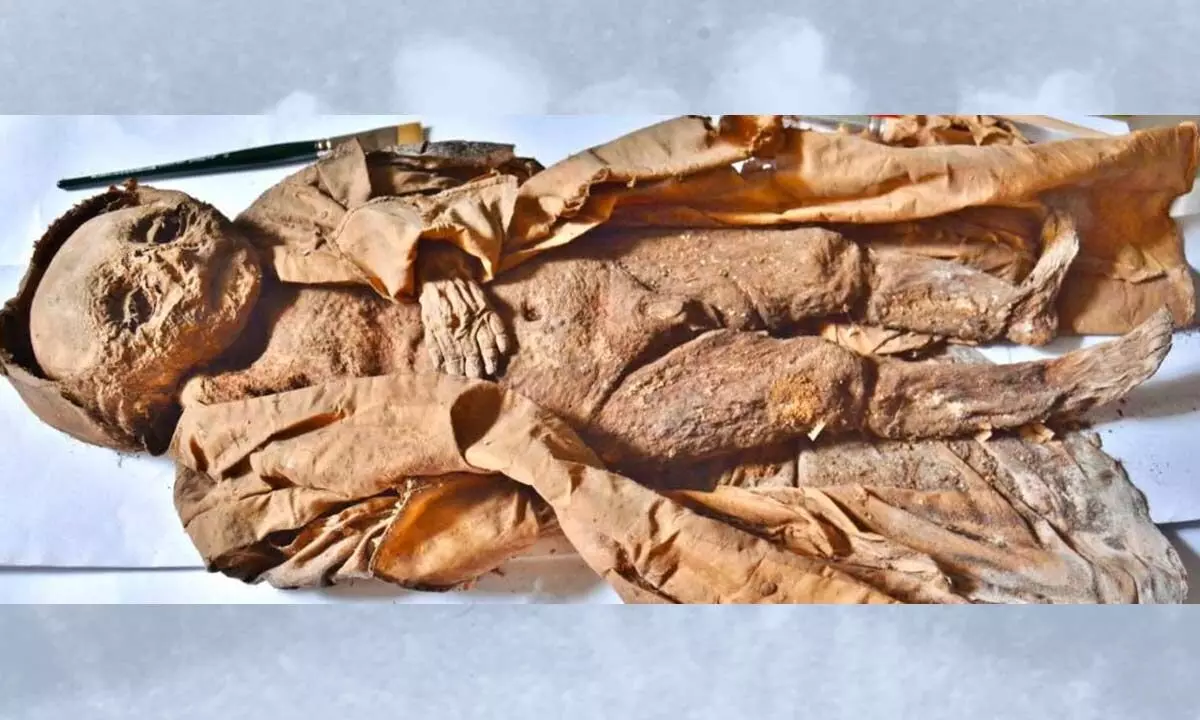Mummified Baby From Austria Shows Indication Of Dying Due To Lack Of Sunlight

The infant mummy covered in a silk coat. (Nerlich et al., Frontiers, 2022)
- The child died due to lack of exposure to sunlight. The discovery was found from Austria.
- The male infant, who had been buried there sometime between the middle of the 16th and the 17th century, was discovered mummified in a family mausoleum designated for the Counts of Starhemberg.
Researchers always come up with something new and astonishing to the world. Similarly a new research has found that a small kid of around a year or two was found mummified but the reason of his death is not injury or starvation. However, the child died due to lack of exposure to sunlight. The discovery was found from Austria.
The male infant, who had been buried there sometime between the middle of the 16th and the 17th century, was discovered mummified in a family mausoleum designated for the Counts of Starhemberg. His body is still covered in an elegant silk gown, and his little features are distinct despite being shrivelled. Even still, his brief life was undoubtedly unhealthy despite leading a life of privilege.
Using CT scans, a virtual autopsy of the body revealed rib abnormalities that resembled common symptoms of malnutrition, notably vitamin D insufficiency. The disease, known as rickets, usually causes the legs to bow, but this boy's bones didn't exhibit this characteristic.
The research is always open for more options. Similarly, the second option that the researchers thought about was low vitamin C levels causing scurvy. Even though the rib deformations for the two circumstances aren't exactly the same, their similarities prompted the researchers to look into the matter more.
According to researchers, the 10- to 18-month-old was overweight for his age, at least in comparison to other infants at the time, according to a fat tissue examination. The infant was presumably well-fed during his patrician life, which lessens the likelihood of vitamin C insufficiency. Contrarily, vitamin D is not readily absorbed from food and is instead made in the skin through chemical processes that depend on ultraviolet (UV) radiation, suggesting that the child's acute undernutrition was caused less by a lack of food and more by a lack of sunlight.
Although the mummified infant discovered in Austria is just one child from one family at one point in time in one region of Europe, the discovery offers an intriguing window into the lifestyle of affluent infants in the 16th and 17th centuries given the rarity of well-preserved infant graves.
Furthermore, researchers believe the deceased was a firstborn, possibly named Gundaker, Gregor, or Reichard, based on the family tree and the fact that he was the sole child in the family vault and was interred in a silk funeral coat. Unfortunately, there was no inscription on his coffin.















